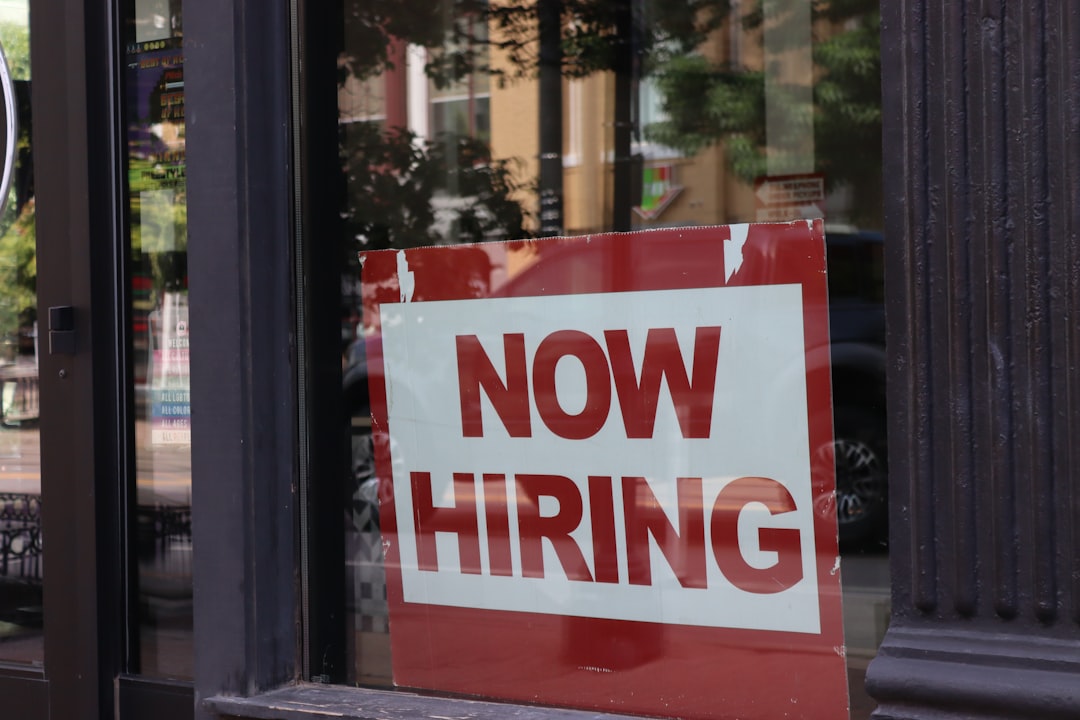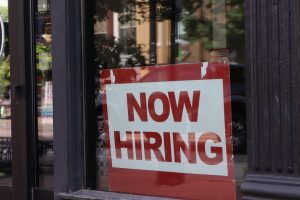AI Challenges in Hiring: Back to Basics for Employers & Applicants
Explore why AI complicates hiring and how both employers and applicants are returning to basics to succeed. Discover effective strategies to
Impact of AI on Hiring Process
Challenges for Employers
Employers initially embraced AI in the hiring process to streamline candidate selection and reduce the time spent on sifting through applications. However, the reliance on AI has introduced complexities.
Automated systems often struggle to interpret nuanced qualifications and may overlook candidates who do not fit traditional molds but possess valuable skills. As a result, companies find themselves revisiting traditional methods, such as in-depth interviews and personalized assessments, to ensure they do not miss out on potential talent.
Moreover, AI-driven tools can inadvertently introduce bias, as they are only as unbiased as the data they are trained on.
This has led employers to question the fairness of their hiring processes and seek ways to mitigate these biases, adding another layer of complexity to the recruitment process.
Challenges for Applicants
For job seekers, AI has made the application process more daunting. Many applicants feel that their resumes are lost in a sea of data, with automated systems filtering them out before a human ever sees their qualifications.
This has led to a resurgence in traditional networking and personal referrals as candidates strive to bypass the algorithms and connect directly with hiring managers.
Additionally, applicants are now required to tailor their resumes and cover letters to align with AI systems, often including specific keywords to pass initial screenings. This has shifted the focus from genuine skill representation to strategic keyword placement, which can be frustrating for candidates who feel their true capabilities are overshadowed by the need to game the system.
Returning to Basics
Both employers and applicants are increasingly recognizing the limitations of AI in the hiring process and are reverting to more traditional methods to find the right fit.
Employers are placing greater emphasis on personal interactions and holistic assessments, while candidates are focusing on building personal connections and leveraging networks to secure job opportunities.
This return to basics highlights the enduring importance of human judgment and the need for a balanced approach that combines the efficiency of AI with the nuanced understanding that only human interaction can provide. As both sides navigate these challenges, the hiring process continues to evolve, seeking a harmonious integration of technology and human insight.
Challenges for Employers and Applicants
Increased Volume of Applications
With AI-powered tools making it easier to apply for jobs, employers are experiencing an overwhelming influx of applications.
This surge makes it challenging to sift through candidates effectively, often resulting in qualified applicants being overlooked. The sheer volume can lead to delays in the hiring process, as human resources teams struggle to manage the workload.
Over-Reliance on Algorithms
Employers are increasingly relying on AI algorithms to screen resumes and shortlist candidates.
While this can streamline the process, it also introduces the risk of missing out on potential talent due to algorithmic biases or errors. These systems may prioritize certain keywords or experiences, inadvertently filtering out diverse candidates who could be a great fit.
Loss of Personal Touch
As technology takes center stage in recruitment, the personal interaction between employers and applicants diminishes.
This lack of engagement can result in a disconnect, making it difficult for employers to assess cultural fit and for applicants to gauge the company environment. Both parties may miss opportunities to build rapport and truly understand each other’s values and expectations.
Adapting to New Technologies
For applicants, the rapid integration of AI in hiring processes means they must quickly adapt to new technologies.
This includes optimizing resumes for AI systems and preparing for AI-driven interviews. The learning curve can be steep, particularly for those who are less tech-savvy, putting them at a disadvantage compared to more technologically adept candidates.
Back to Basics
In response to these challenges, both employers and applicants are finding value in returning to traditional methods.
Employers are emphasizing the importance of human judgment and interpersonal skills in the hiring process, while applicants are focusing on crafting personalized applications and networking. This shift aims to balance the efficiency of AI with the nuanced understanding that only human interaction can provide.
Importance of Traditional Hiring Methods
Personal Interaction
One of the primary advantages of traditional hiring methods is the emphasis on personal interaction.
Face-to-face interviews allow employers to assess candidates’ interpersonal skills, body language, and overall demeanor, which are difficult to gauge through AI-driven platforms. This personal touch helps in building a rapport and understanding the candidate’s cultural fit within the organization.
Comprehensive Evaluation
Traditional hiring methods often involve multiple stages, such as phone screenings, in-person interviews, and reference checks.
These steps provide a more comprehensive evaluation of a candidate’s capabilities and suitability for the role. Unlike AI systems that may rely heavily on keyword matching and algorithms, traditional methods enable a nuanced assessment of a candidate’s experience and potential.
Reduced Bias
While AI is designed to be objective, it can inadvertently perpetuate biases present in the data it was trained on.
Traditional hiring practices, on the other hand, allow for human judgment and intuition, which can help identify and mitigate biases. Employers can consciously make efforts to diversify their teams by considering a broader range of candidates beyond what AI algorithms might suggest.
Enhanced Trust and Transparency
Traditional hiring methods foster a sense of trust and transparency between employers and candidates.
Direct communication and feedback during the hiring process can clarify expectations and reduce misunderstandings. This transparency is crucial for building a strong employer-employee relationship from the outset, which can lead to higher job satisfaction and retention rates.
Adaptability to Unique Roles
Not all positions can be effectively filled through AI-driven processes.
Roles that require creativity, emotional intelligence, or unique skill sets often benefit from traditional hiring approaches. These methods allow employers to tailor the recruitment process to the specific demands of the job, ensuring that the right candidates are selected based on a holistic view of their abilities and potential contributions.
Strategies for Finding the Right Fit
Emphasizing Human Connection
In an era where AI-driven tools dominate the hiring landscape, both employers and applicants are rediscovering the importance of human connection.
Employers are encouraged to engage in more face-to-face interactions, such as in-person interviews or video calls, to better assess a candidate’s cultural fit and interpersonal skills. This approach allows for a more nuanced understanding of the candidate beyond what AI can evaluate.
Applicants, on the other hand, are focusing on networking and personal referrals.
Building relationships within the industry can provide insights into company culture and expectations, which are often missed by automated systems. By leveraging personal connections, candidates can gain a competitive edge and ensure their applications are seen by the right people.
Prioritizing Soft Skills
While AI excels at evaluating technical skills and qualifications, it often overlooks the importance of soft skills.
Employers are increasingly prioritizing attributes such as communication, adaptability, and problem-solving abilities. These skills are critical for team cohesion and long-term success, yet they are difficult to quantify through AI assessments.
Candidates are advised to highlight their soft skills through examples and stories in their resumes and during interviews.
Demonstrating these skills effectively can set them apart in a crowded job market where many applicants possess similar technical qualifications.
Customizing the Hiring Process
Employers are moving away from one-size-fits-all hiring processes, recognizing that different roles require different evaluation methods. Tailoring the hiring process to suit the specific needs of a position can lead to better outcomes.
For example, incorporating practical assessments or role-playing scenarios can provide deeper insights into a candidate’s capabilities.
Applicants should also tailor their application materials to align with the specific requirements of each job. By customizing their resumes and cover letters, candidates can better showcase their relevant experience and skills, making it easier for employers to see their potential fit for the role.
Focusing on Transparency and Communication
Clear and open communication is crucial in overcoming the challenges posed by AI in hiring.
Employers are encouraged to provide detailed job descriptions and realistic expectations about the roles they are hiring for. This transparency helps candidates understand what is truly required and assess their suitability for the position.
Applicants should also communicate openly about their career goals and expectations.
By being honest about their aspirations and limitations, candidates can ensure they are applying to positions that truly align with their long-term objectives, reducing the likelihood of mismatches.
FAQ
Q1: How is AI making the hiring process harder for employers?
A1: AI can make the hiring process more complex for employers by introducing challenges such as over-reliance on algorithms that may not accurately assess candidate potential, leading to missed opportunities. Additionally, AI systems can inadvertently introduce biases if not properly managed, requiring employers to invest time and resources in ensuring fairness and accuracy in their hiring processes.
Q2: Why might job applicants find AI-driven hiring processes difficult?
A2: Job applicants may find AI-driven hiring processes challenging because these systems often use automated tools to screen resumes, which can overlook qualified candidates who do not use specific keywords. This can lead to frustration as applicants may not understand why they are not progressing in the hiring process, prompting them to revert to more traditional methods to ensure their skills and experiences are recognized.
Q3: What are some common mistakes employers make when using AI in hiring?
A3: Common mistakes employers make when using AI in hiring include relying too heavily on AI without human oversight, which can lead to impersonal candidate experiences and potential bias. Employers may also fail to regularly update and refine their AI tools to align with current job market trends and company needs, resulting in outdated or irrelevant candidate assessments.
Takeaway
“Maximize your trading potential now! Download our premium chart analysis guide for expert insights, sign up for exclusive early access to market insights, and follow real-time trade alerts to stay ahead of the curve. Elevate your ROI today!” According to a report by Bloomberg,











Comments